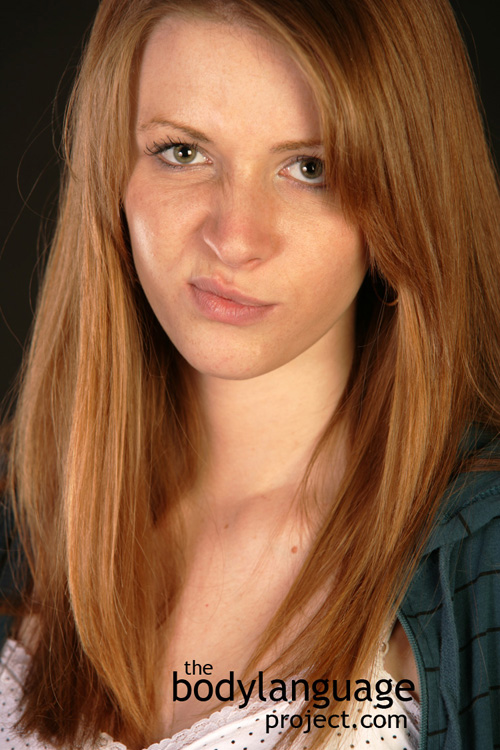Body Language of Nose Crinkle, Nose Turning or Nose Shrug
Synonym(s): Half-Sneer, Nose Shrug, Nose Turning, Nose Twitch, similar to a sneer.
Description: The nose momentary twitches to the side. Imagine a half sneer where the nose moves to one side rather than flexes in a full sneer.
In One Sentence: The nose crinkle signals a negative thought.
How To Use it: The nose crinkle is highly effective when used as a microexpression to show distain. Following a statement you disagree with, crinkle the nose by flexing the muscles around it forming an expression similar to disgust. This should be held only momentarily and follow the statement immediately. Since the cue is held for such a small amount of time, flashing it shows your true feelings, but since it’s not vocal or persistent, carries less weight and therefore puts you at less risk to scrutiny.
The signal can also be used between two parties whom wish to share a secrete dislike. For example, eye contact toward a friend coupled with a nose crinkle upon the entry of a new associate indicates dislike.
Context: General.
Verbal Translation: “I don’t like what I’m seeing or hearing and it’s forcing my nose to crinkle up as if I’m taking in a particularly offensive odor.”
Variant: The nose might do a full sneer with both sides of the nose flexing in unison.
Cue In Action: When it was suggested that the lunch hour be reduced from a full hour to half that in order to boost productivity, the associate shrugged his nose to the side in a half-sneer. It was obvious that he wasn’t in favour of the motion.
Meaning and/or Motivation: A signal of dislike or disbelief as if a person is moving their nose away from a disagreeable smell.
Cue Cluster: The nose turning is associated with other negative body language, watch for eyebrows to come together in grief, eye rolling, head turning away and eye contact toward supporters rather to the presenter of the information. The body might also be turned away from the presenter of the information.
Body Language Category: Automatic gesture, Closed facial gestures, Dislike (nonverbal), Leaked or involuntary body language, Microexpression, Microgestures, Micromessaging, Negative body language, Rejection body language.

